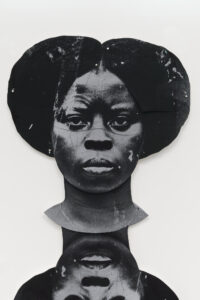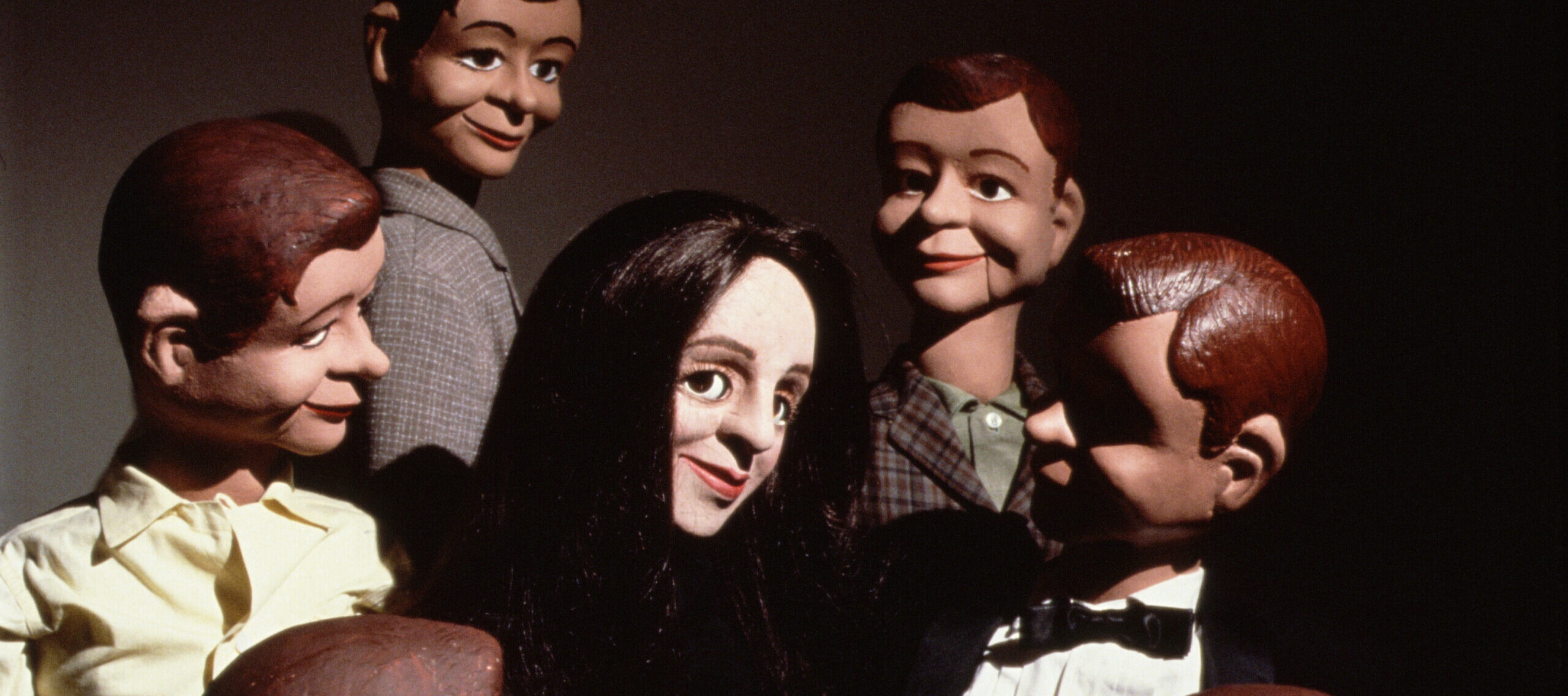WASHINGTON—This February, a new exhibition at the National Museum of Women in the Arts (NMWA) explores modern and contemporary women artists’ bold use of the uncanny as a feminist strategy and social critique. On view from February 28 through August 10, 2025, Uncanny features nearly 70 works by more than 30 artists, from renowned figures of modern art history such as Louise Bourgeois, Leonora Carrington, Meret Oppenheim and Remedios Varo to prominent contemporary artists including Berlinde De Bruyckere, Pipilotti Rist, Shahzia Sikander, Laurie Simmons and Gillian Wearing. Named for the term popularized by Sigmund Freud to describe the unsettling psychological experience of something both familiar and foreign, Uncanny is the first exhibition to examine this concept through a feminist lens. Organized around the themes of surreal imaginings, unsafe spaces and the phenomenon of the uncanny valley, the exhibition comprises painting, sculpture, photography, works on paper and video. The exhibition features recent acquisitions and rarely seen works in NMWA’s collection, complemented by key loans.
“The enigmatic, darkly humorous and psychologically tense artworks in Uncanny give form to women artists’ powerful expressions of existential unease,” said NMWA Associate Curator Orin Zahra, who organized Uncanny. “Rather than comfort and soothe, these ghostly and fantastical figures haunt the unconscious. Instead of picturesque images, artists offer disquieting spaces that unsettle the viewer. In focusing on the ambiguity between reality and fiction, artists explore increasingly blurred lines between the artificial and eerily human.”
Across the three themes, artists’ wide-ranging use of the uncanny gives rise to an uncomfortable tension. They express personal anguish, discomfort and revulsion, while simultaneously tackling and subverting patriarchal conventions.
Surreal Imaginings
The exhibition opens with the Surrealist movement of the early 20th century, in which artists drew on Sigmund Freud’s writings about the unconscious to create strange, dreamlike imagery. On view are works by Leonora Carrington (1917–2011), who explored themes of identity, metamorphosis and transformation in playful yet inhospitable realms. In her Ship of Cranes (2010), menacing birds with elongated, piercing beaks glide ominously in a bird-boat hybrid, pointing to Carrington’s interest in ideas of rebirth and the afterlife found in ancient mythologies.
Many works in Uncanny address physical trauma or the body’s emotional and physical relationship to the unknown. Photographic collages of Black figures by Frida Orupabo (b. 1986) evoke a colonial archive where she critiques historical injustices and violence against women through fragmented, distorted and multiplied bodies that echo the Surrealist cadavre exquis (exquisite corpse). Similarly alluring and alarming, Untitled (with foot) (1989) by Louise Bourgeois (1911–2010), depicts a baby’s foot sticking out from under a perfect sphere, all carved from pink marble.

Unsafe Spaces
The term “uncanny,” or unheimlich in German, translates to “not-at-home,” a reference to the feeling of being in an unfamiliar space with hidden secrets. With this in mind, the haunting, 15-foot-wide sculpture 019 (2007) by Berlinde De Bruyckere (b. 1964) presents fragments of wax-covered wood within an antique glass vitrine. The objects appear startlingly animate, as if bodies and ethnographic specimens are hanging on display. Julie Roberts (b. 1963) creates unsettling images of medical instruments or facilities floating in saturated color. In Gynaecology Couch (1992) and Sigmund Freud Study (1998), she examines society’s spaces and methods of exercising power, particularly over the female body.
In her series “Rewriting History”(2017), Fabiola Jean-Louis (b. 1978) photographs carefully staged, seemingly innocuous portraits of close acquaintances wearing elaborate period costumes typical of upper-class European women, while disturbing images of racial and sexual violence are hidden within the background or details of a dress, reminding the viewer of the lineage of violence. The haunting video Collapse (2013) by Sama Alshaibi (b. 1973) uses the honeybee as a metaphor for refugees displaced by environmental changes; while nations wage war over power, resources and territory, insects and humanity alike face impending extinction.
Uncanny Valley
A term coined by the Japanese roboticist Masahiro Mori in 1970, “uncanny valley” describes the strange sensation evoked by physical objects that very closely—but not completely—resemble living people. These images typically contain small peculiarities that signal to the viewer that something is not quite natural. Uncanny features several works by Gillian Wearing (b. 1963), who dons silicone prosthetic masks, wigs and costumes to create eerily realistic, large-scale photographs of herself as other people. In images such as Self-Portrait (2000), Wearing’s own eyes peer out from slits in a mask, underscoring tensions between deception and revelation. Also on view are several photographs from the iconic series on twins by Mary Ellen Mark (1940–2015), alluding to the uncanny quality of doubles or doppelgangers.
Laurie Simmons (b. 1949) uses dolls and miniature objects to stage scenes that question gender roles in post-war suburban America. The exhibition features several of her photographs depicting anthropomorphized doll legs attached to pastries, stacks of money, perfume bottles and other household objects, exploring the way that consumer fetishism has been tailored to a female identity. Also on view is Body En Thrall (2018) by Martine Gutierrez (b. 1989), which initially appears to be a centerfold-style self-portrait, then reveals melon halves tucked into her bikini top. Foregrounding her Mayan heritage as well as her transgender identity, Gutierrez’s photographs humorously challenge unrealistic conceptions of womanhood.
The video series “Conversations with BINA48” (2014–ongoing) by Stephanie Dinkins (b. 1964) documents her interactions with an android modeled to look like Bina Aspen Rothblatt, a Black woman and wife of the cofounder of Terasem Movement, a foundation promoting the maximum extension of human life using cryogenics and biotechnologies. BINA48 is a bust-like head mounted on a frame, but her conversational speech is eerily advanced. The robot’s discerning responses to questions about race and gender highlight social inequities perpetuated by those who are coding technologically advanced systems.
Related programming will complement the exhibition, including a talk with curator Orin Zahra and exhibition artists Fabiola Jean-Louis and Sheida Soleimani on March 7, a Firsthand Experience: Hula Hoop workshop, and a themed celebration at the May edition of NMWA Nights, the museum’s popular late-night program series.
Uncanny is organized by the National Museum of Women in the Arts. The exhibition is made possible by Share Fund and the Estate of Lisa Claudy Fleischman, with additional funding provided by the members of NMWA.
Press Preview
A press preview will be held at 10 a.m. on Tuesday, February 25 and feature a tour with curator Orin Zahra. Register online.
National Museum of Women in the Arts
The National Museum of Women in the Arts (NMWA) is the first museum in the world solely dedicated to championing women through the arts. With its collections, exhibitions, programs and online content, the museum inspires dynamic exchanges about art and ideas. NMWA advocates for better representation of women and nonbinary artists and serves as a vital center for thought leadership, community engagement and social change. NMWA addresses the gender imbalance in the presentation of art by bringing to light important women artists of the past while promoting great women artists working today. The collection highlights a wide range of works in a variety of mediums by artists including Rosa Bonheur, Louise Bourgeois, Lalla Essaydi, Lavinia Fontana, Frida Kahlo, Hung Liu, Zanele Muholi, Faith Ringgold, Niki de Saint Phalle and Amy Sherald.
NMWA is located at 1250 New York Avenue, NW, Washington, D.C. It is open Tues.–Sun., 10 a.m.–5 p.m. and closed on Mondays and select holidays. Admission is $16 for adults, $13 for D.C. residents and visitors 70 and over, and free for visitors 21 and under. Admission is free the first Sunday and second Wednesday of each month. For information, call 202-783-5000, visit nmwa.org, Broad Strokes blog, Facebook or Instagram.
Media Contacts
National Museum of Women in the Arts
Amy Mannarino, amannarino@nmwa.org
Emma Filar, efilar@nmwa.org
Nicole Straus Public Relations
Katrina Weber Ashour, katrina@krwaconsulting.com
Amanda Domizio, amanda@domiziopr.com
